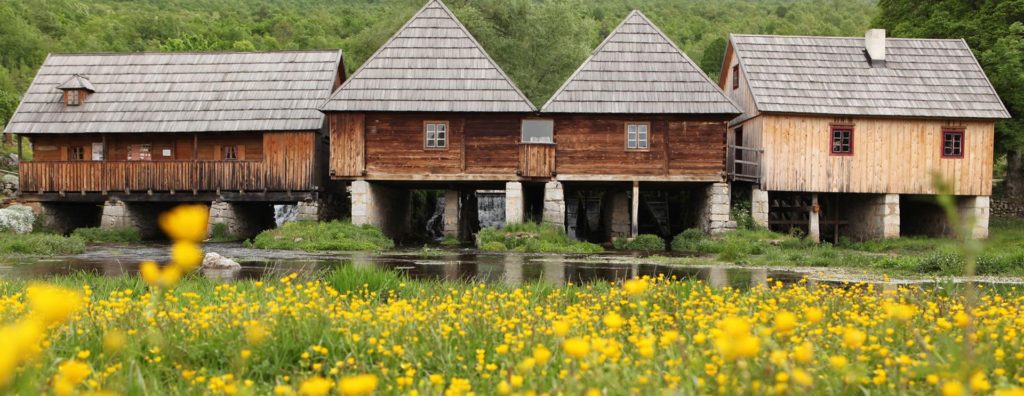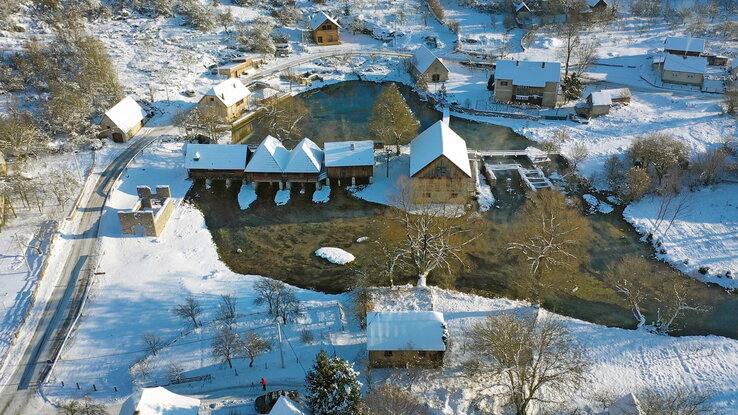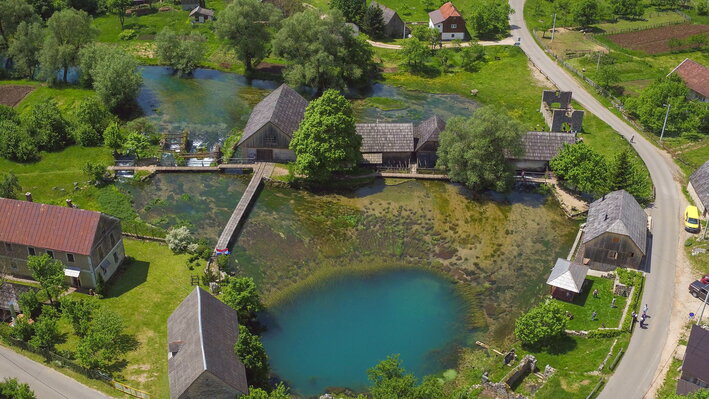During the 20th century, about sixty water mills were operating on the Gacka river and its tributaries. Today only a few water mills at the river springs in Sinac are still used for grinding grain in the traditional way using the river’s water power. Continuing in harmony and collusion between man and nature, as objects signifying their accord and cooperation, the water mills safeguard the memory of old, extinct trades.


The millstones on the Sinac scaffolds were grinding away incessantly, day and night, throughout the year, accompanied by the roar and murmur of water. In times of big floods or low water levels of the river Lika, people would travel for hours from the remote parts of the Krbava and Lika regions to grind their grains during the peak period from threshing season to late autumn. Grain was transported on oxcarts or packsaddles, or on sleds in winter, horse-drawn carts still being a rarity. The place was bustling with movement, with life and people; on some days as many as twenty cart-loads were brought, with villagers waiting in a queue for their turn to mill the grain. It is hard to imagine that this dying village was a prosperous milling community.
The centuries-old tradition of milling has been preserved not only as an important commercial activity, but also as a way to exchange knowledge and experience, to make important bonds and friendships, and converse with others with plenty of jokes and laughter.
As they had to wait for their turn, the peasants brought food and hay for the cattle. Sometimes they had to wait two or three days until it was their turn in the milling queue, in which case the miller provided them with food and accommodation as well as hay for the cattle. The mill owner had to make sure that enough bread was baked each day. Besides, he had to take care of his reputation, secure the grain, and make sure the grain is always finely ground. On the other hand, some millers were only interested in the millstone turning and in the milling being finished quickly so as to increase the profits from their service. The milling trade was therefore considered an easy way to earn money and a secure source of income. However, the millstones required maintenance. They had to be removed every couple of days, depending on the amount of grain processed, and had to be sharpened. Only the most skilled millers knew how to chisel the stone, place it in circular wood forms and cover it with resin, and after the resin had hardened, nail it with brass rings.

A single water mill had more than one owner with each of them entitled to use a single millstone according to a predefined schedule. They were “holders of the line”, a right acquired by inheritance, donation, or acquisition of shares. Even women were entitled to it through dowry.
Today, at the beginning of a new century, the water mills at the springs of Gacka are still standing as monuments of traditional architecture, with the clatter of millstones.
Visit us and experience the centennial peace of old water mills, either on your own or in a group. For sightseeing tours and demonstration of the grain milling process, cloth fulling, and wool rug weaving, please announce your visit directly to:
Jure Majer, the Miller
Phone: +385 92-105-1466
Jure Kolaković, the Miller
Phone: +385 99-571-6940
Pizzeria Ruspante, Sinac 135: tel: 053 787-787

Author: tz-otocac.hr
Photography: Goran Orešković, Nikola Radelić




